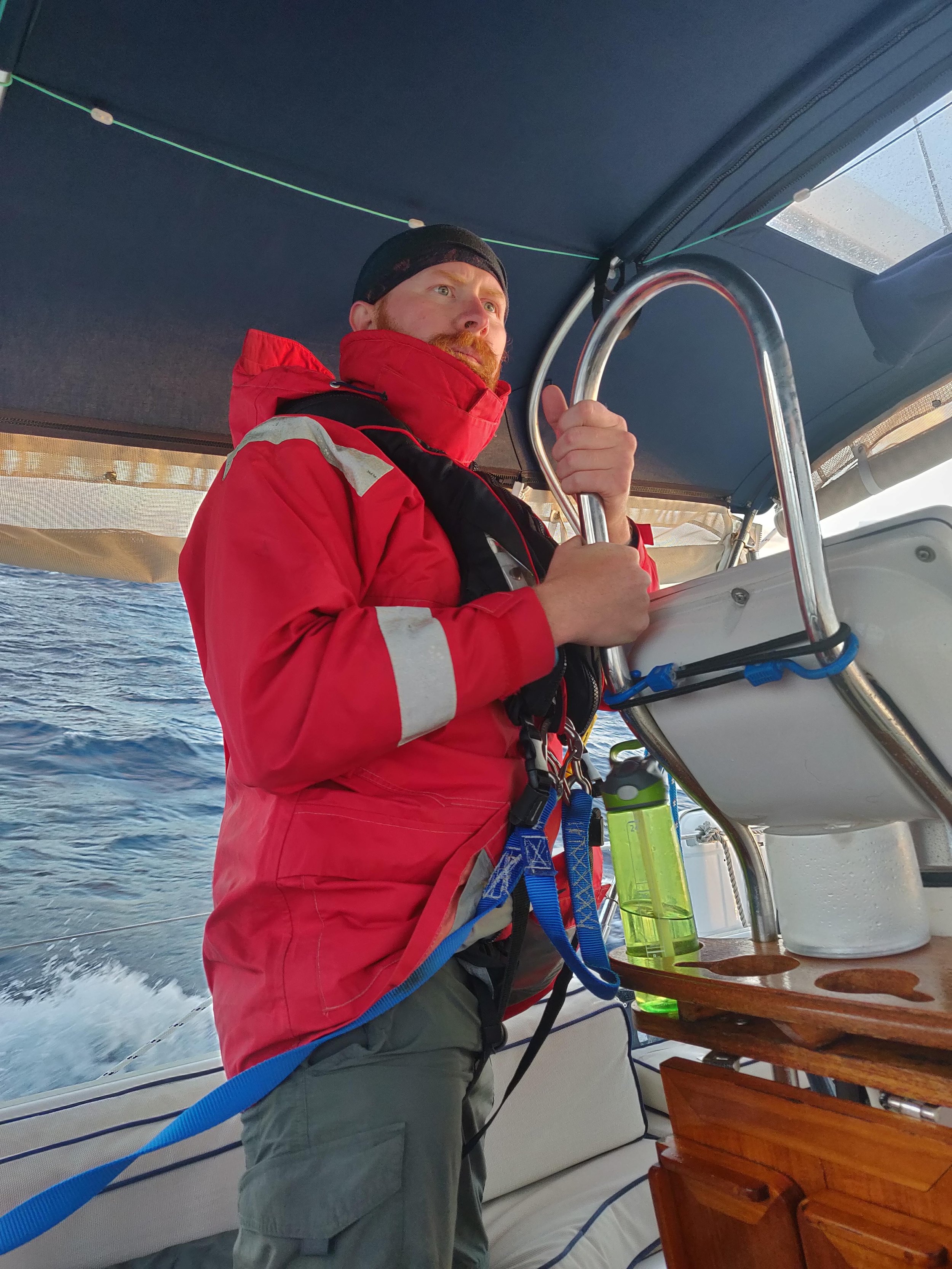Just asking ...
The ecosystem of our lives aboard, asea, for years at a time is foreign to most. When explaining this weirdness to people, normally the first question is a version of, “Wait. What?”, or something equally coherent.
Then there’s the drill-down.
Do you stop during the night? How do you do watches? What if you get sick? Do you cook? What if you need something while you’re, you know, OUT there? And what in the word, dear Millennials, does one do through all those waking hours of days and weeks without an internet connection?
So this post gives one take on just a couple of the most common questions, and the (mostly) serious answers to them.
Who’s the (actual) Captain here?
Dottie and I do this together, and have from the start. We review weather reports daily and decide together what to do, and whether we need to change the sail set, trajectory, or manage something on board that clunked, thunked, or thudded in a nautically suspicious way.
So although we usually do it all completely in tandem, you have to, have to, have to decide on one of us vs the other one is when you’re doing customs forms — they only have one space for one name.
Normally we trade off being captain on the forms, but in the Caribbean we encountered a zealous religious customs agent who would not even SPEAK to Dottie because, well, she was a woman (can you imagine?), and was totally put off by the fact that we had [gasp] alcohol on board. I made the mistake of answering his question, “Do you have alcohol on board” with … “What do you need?”.
That’s another story altogether, but needless to say I was in sole command of captainhood for an entire day!
But What If You Disagree?
Sometimes it happens, when one of us thinks one thing and the other, well is really just wrong. At this point, one single decision still has to get made, so what then?
We’ve decided that we need a rule we can apply. That rule is this: “the more conservative opinion wins”. This rule was created by Dottie, who is (coincidentally?) the more conservative of us. That said, it’s the logical, reasonable, rational thing to do, so I’m in total support.
What Do You Do All Day?
The first couple of days of an off-shore passage are the toughest. You really don’t sleep at all, while you wait for your body to settle into it’s new off-beat rhythm. And if you’re ancient like me, you’re pretty used to getting crappy sleep about half the time. So just expect to be sleep deprived until your body is so shagged out that it just gives in and you collapse into a delicious coma on your bunk for a few hours.
But I’ll say it’s, I don’t know, fairly important to stay conscious during your night watches. To help out there, we strongly encourage crew to take naps during the day. Even if you just go down and close your eyes for a bit. That’s enough to make your midnight watch bearable anyway.
That’s why during the day, naps are key. Otherwise we pass the time by going full-on old-skool by reading, talking to each other, writing in journals, and having meals together.
Retro, right? Actually, it’s pretty sweet.
What Do You Eat (the ETTR)?
Cliff Bars, Chips Ahoy, and Ramen Noodles. Just kidding, haha! I do all the cooking down under, which I love because of another critical rule we have on board.
If I cook, someone else cleans! This is a beautiful thing, bc I can destroy a kitchen, plate up some audible-groaning meal, then walk away. If I can keep from getting sea sick down there in the galley and retching over the side, well it’s a great rule.
WHAT we have to eat is given in a specific order. You can’t just eat anything you want at any time, because you’re not going to see another local store, fruit stand, or bodega for another 1800 miles. As you might guess, the fresh stuff gets eaten first. Sauteed veg and any meat in danger of turning weird will get made right away.
I apply the ETTR rule: Estimated Time To Rot.
The best example is like when we catch a fish, such as a tuna:
Sushi and sashimi prepared first because (to quote Gollum) fish is best when it’s raw and wriggling ;). This would be the first day with the tuna.
Next, Ceviche and/or Poisson Cru, which cooks the fish with some form citrus (limes if you thought to nab those before heading out). Poisson Cru is a righteous food and first cousin of the better known ceviche, in which you add coconut cream to the fish, as well as making some steaming coconut rice to serve it over … mmmmmmy god it’s good.
Next up on the menu, seared tuna steaks served in something like a simple sesame/soy/ginger sauce.
At that point, you can cube up the rest and throw it in a curry or stew or whatnot, or freeze it for later if you’re basically topped off on the tuna.
In the beginning, we certainly didn’t know the answers to all of these questions. And as you can tell from my telling, we basically just figured some things out as we went along. There were so very many unknowns that could have stopped us altogether if we’d felt like we had to have all the answers before heading out.
But the lack of knowing beforehand was like the emptiness of the ocean herself, a draw and calling that we knew we couldn’t wait to wade into, test our skills and our fortitude, and trust that somehow it will all work itself out.














